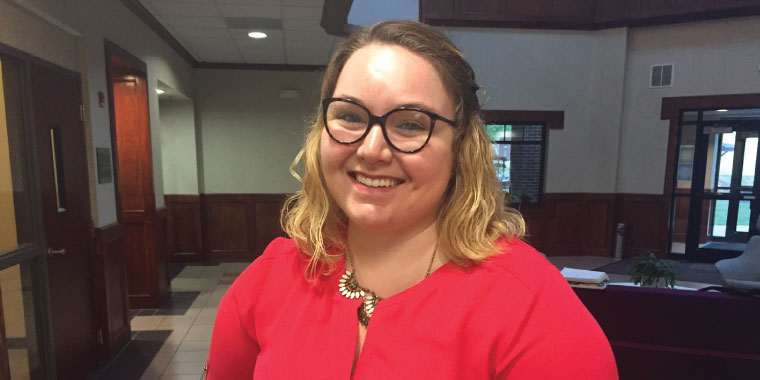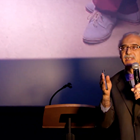This week, anatomy fellow Amy Whitaker presented her thesis defense entitled, “Biomechanical and Morpholocial Variation of the Anterior Talofibular Ligament.”
Amy began her research in July, 2016. During that time, she dissected ankles from 54 cadavers ranging from 44 to 96-years old.
We asked Amy some questions about her project and discoveries:
Q) What do you feel is the most important conclusion of your research?
A) My research has verified the way surgeons have been reconstructing these ligaments for years. I am saying that the morphology does not directly relate to the biomechanics due to the variability and inconsistency of the ligament. An orthopedic surgeon reading my paper should be in agreement that the methods they are using to repair the ligament are best. I hope this research will give surgeons a more detailed understanding of what the ligament could and should look like while repairing it.
Q) What originally drew you to research the Anterior Talofibular Ligament?
A) During medical school, we are told that the ATFL always tears first. Dr. Barth Wright worked with a previous fellow dissecting these ligaments and discovered their variability. After realizing this wide range of variable existed, Dr. Wright came up with the idea that we needed to look into the biomechanics to see why the ATFL always tears first.
Q) What are your career plans?
A) Upon finishing the Anatomy Fellowship, I am excited to get into my third year of medical school. I am starting out my third year by continuing to work towards my MBA at Rockhurst University in Kansas City. In two years after graduating with a MS, MBA and DO, I hope to get into an orthopedic surgery, general surgery or a pediatrics residency. After teaching this year, I have realized that I love to teach. Besides educating patients, I am now considering a path into academics with a possible goal of becoming a dean at a medical school. From there the possibilities are endless because of the opportunities KCU has given me.
Amy is one of six anatomy fellows who took part in the 11-month anatomy fellowship program available to third- or fourth-year medical students. The program allows fellows to expand their anatomy training by assisting in teaching and lab management as well as completing a research project for publication.



_20240326160031_0.png?w=140&h=140)
(0) Comments